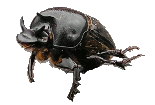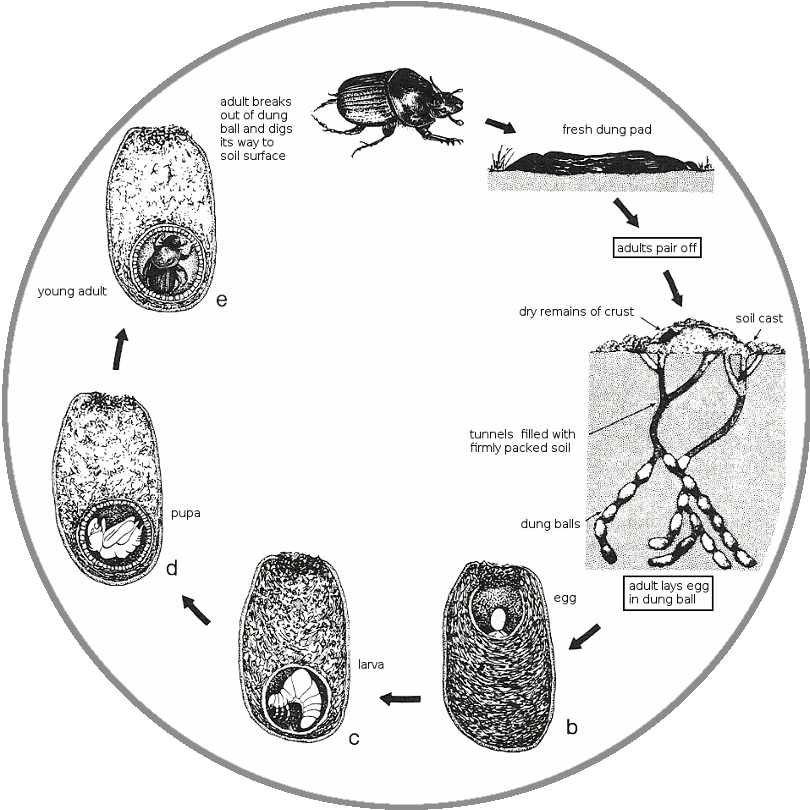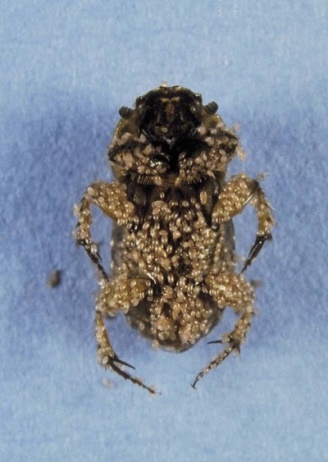
Main index
Introduction
Natives
Exotics
Projects
Life-cycle
Trapping
Identification
References
Contacts
info@dunghillpress.com

AMRC Review No. 80
Good Dung and Bad Dung
However, the gut bacteria of the grazing animal is altered by feeding grain (increased gut acidity), the heavy use of nitrogenous fertilisers, and by drought (fibrous grasses) so that the beetles are not attracted to dung from such feeds.
Irrigated dairy farms are crucial for the survival of beetle colonies during dry summers.
In particularly dry summers, G. spiniger emerges much earlier in the season (in January rather than normally following the first good rain in mid-February to March). In such dry years dung beetles have been observed to be attracted even to chook dung which they would normally leave alone.
In Tasmania, we only have species that bury dung in tunnels; we have no dung ball rollers.
 |
Farmers often notice small insects on the underside of dung beetles, assuming they are babies. They are phoretic (âcatch-a-rideâ) mites that are also important in breaking down dung. (left) Phoretic mites clinging to the underside of a dung beetle. [Photo: B. Lobert, Shepparton, Victoria.] |